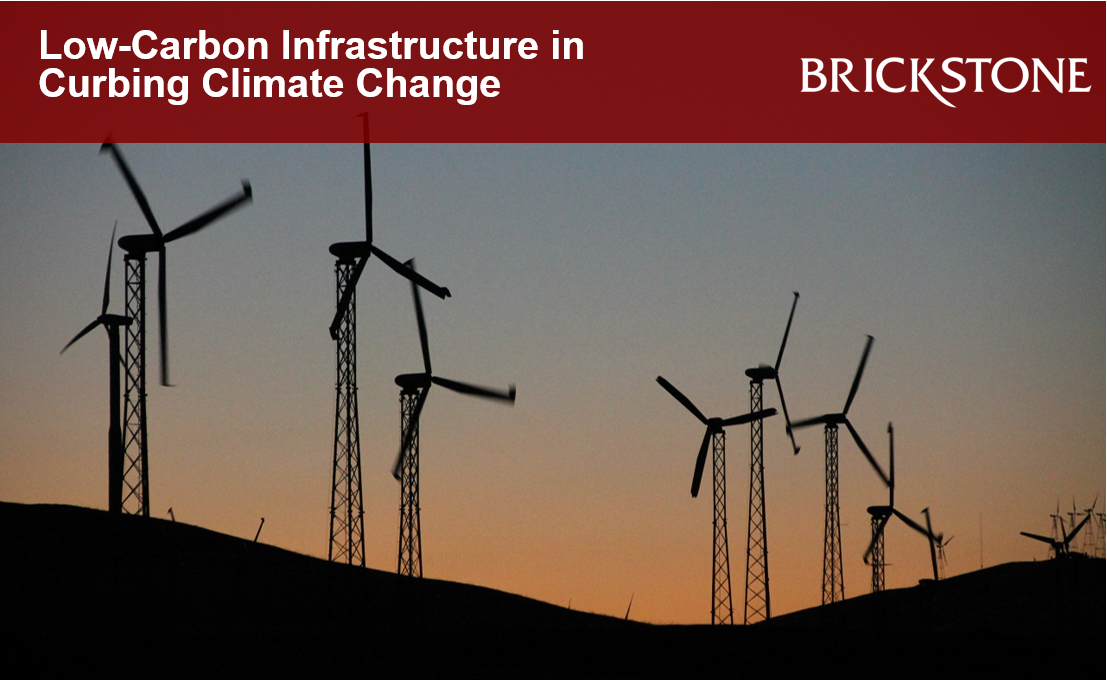Low-carbon Infrastructure in Curbing Climate Change
Need for Low-carbon Infrastructure
Although, Infrastructure plays a huge role in driving national growth, employment, and better quality of life in emerging markets and developing economies, it however comes at a huge cost as it may cause adverse planetary and environmental changes if left unchecked.
According to the UN, approximately 79% of global greenhouse gas emissions come from infrastructure construction and operations such as power plants, buildings, and transport. And without a unified planning and action to tackle emissions from infrastructure, over 720 million people could be pushed back into extreme poverty by 2050 as a result of climate impacts. Additionally, the number of deaths attributable to the harmful effects of emissions from key infrastructure industries will rise from the current 150,000 per year to 250,000 by 2030.
To curb this situation while maintaining infrastructure as a priority sector for climate action, and national growth in general, climate experts have argued that governments need to radically rethink how infrastructure is planned, delivered and managed in order to make it suitable for a low-emission and resilient future. Hence, instead of building less infrastructures, part of the solution lies in low-carbon infrastructure.
This article by Brickstone reviews some institutional reports and publications on Low-carbon Infrastructure, highlighting its crucial role in curbing climate change and its drastic impacts.
Low-carbon Infrastructure in Climate Change
Climate change experts have identified low-carbon infrastructure as a key solution to preventing environmental damages to the people from the gas emissions caused by infrastructure. It is also critical to achieving climate change targets like the Paris agreement, net zero emissions by 2050, and other national climate goals.
Low-carbon infrastructure generates fewer carbon emissions than traditional infrastructure and helps build resilience in vulnerable countries while protecting against exposure to extreme climate change events.
As we seek to bridge the infrastructure gap and improve the quality of life of people everywhere, it is critical that we invest in sustainable infrastructure that adapts to future uncertain climate conditions; contributes to the decarbonization of the economy; protects biodiversity and minimizes pollution. Sustainable infrastructure is the only way we can ensure that people, nature and the environment thrive together.
Low-carbon infrastructures are critical to creating a more equitable, resilient and healthy future. Aside from improving public health by curbing fossil fuel combustion that worsens air quality, low-carbon infrastructure can also save money and create good job opportunities in local communities.
According to WeForum, there are four crucial trends driving low-carbon buildings: decarbonization, electrification, efficiency and digitalization. These four good “DEEDS” work in combination to reduce the carbon emissions and overall cost of building operations and supporting infrastructure. Buildings can achieve zero carbon (or zero carbon ready) performance by eliminating fossil fuel use for heating, using on-site and/or off-site renewable energy, reducing the use of high global warming potential refrigerants and using low-carbon, reused or recycled materials in construction.
Examples of low-carbon infrastructure are:
- Railway infrastructure, which can reduce the number of carbon-emitting trucks.
- Urban transport projects, such as Metros and Light Rail projects which reduce car usage- one of the more notable sources of carbon emissions.
- Renewable energy projects (solar, wind, and hydropower), which have much lower carbon emissions compared to fossil fuels.
Despite holding so many prospects, scaling up private capital is crucial to finance vital low-carbon infrastructure projects, particularly in less developed economies, to maximize these potential. According to the IMF, estimates vary, but these economies must collectively invest at least $1 trillion in energy infrastructure by 2030 and $3 trillion to $6 trillion across all sectors per year by 2050 to mitigate climate change by substantially reducing greenhouse gas emissions.
In addition, a further $140 billion to $300 billion a year by 2030 is needed to adapt to the physical consequences of climate change, such as rising seas and intensifying droughts. This could sharply rise to between $520 billion and $1.75 trillion annually after 2050 depending on how effective climate mitigation measures have been.
Read more on Low-carbon Infrastructure here.






